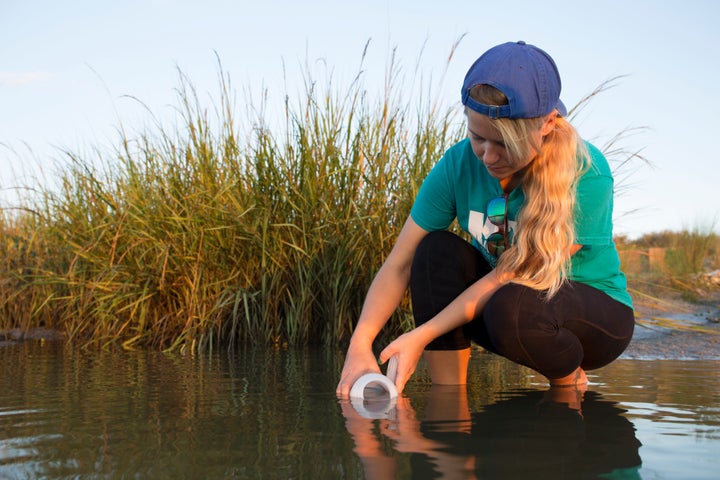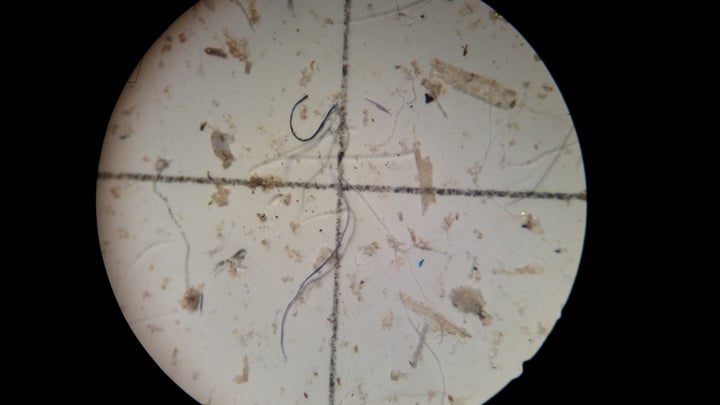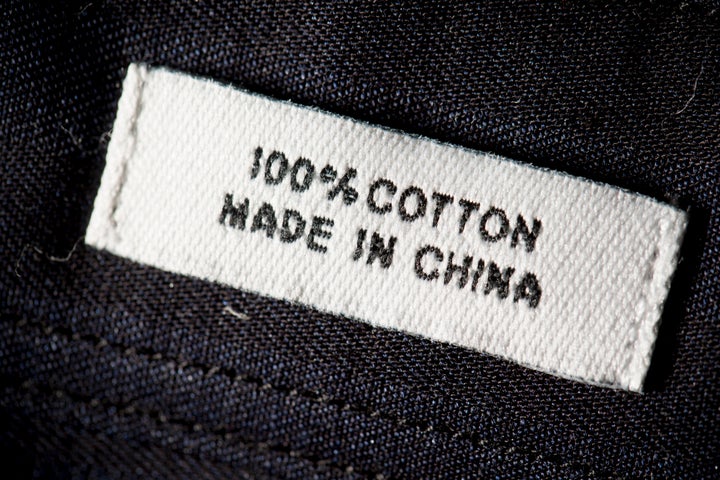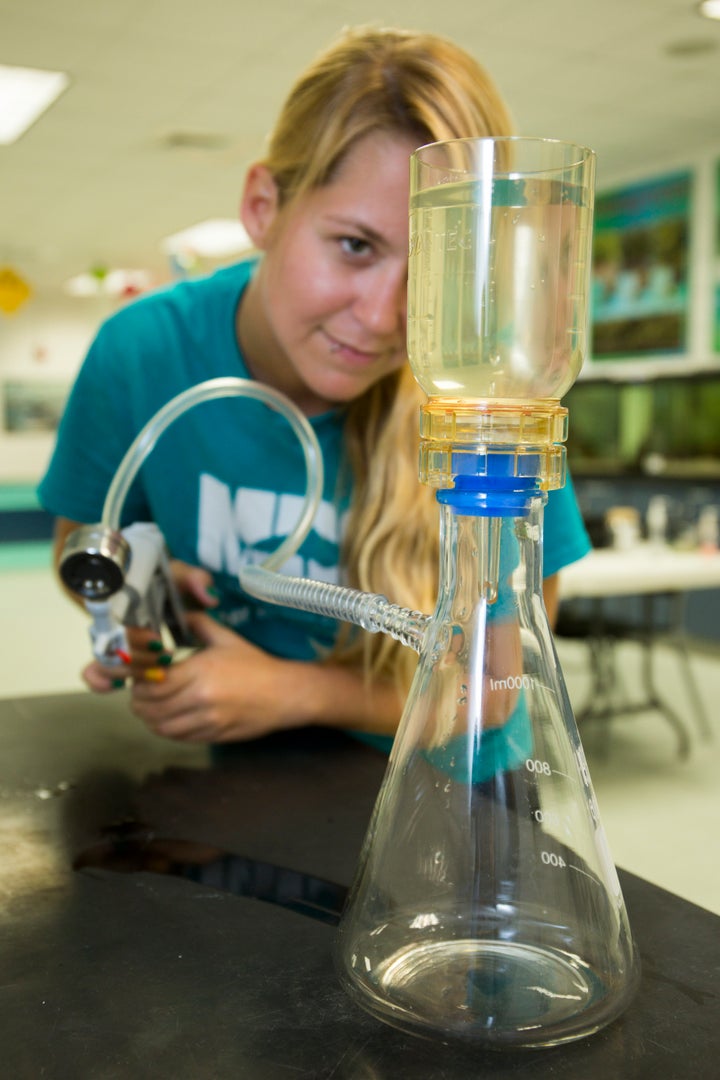Here’s something to meditate about.
Yoga pants, and other clothes made from common synthetic materials, are causing the world’s oceans to fill up with minuscule pieces of plastic known as microfibers, according to a new study out of Florida.
The lead researcher on the project says she was so thrown off by the unexpected findings that she can’t even accurately assess the types of risks such pollution poses at this point.
Nylon, acrylic, polyester and other materials ― which are used to make workout pants, tops, fleeces and other leisure clothing ― are all petroleum-based plastics. They’re spun into tiny threads and woven together to make fabric. When people clean these clothes in a washing machine, microfibers are released and end up in wastewater treatment plants. From there, they travel to rivers, lakes and oceans.
“It's hard to imagine that this could be a good thing.”
- -- Maia McGuire, University of Florida
The Florida Microplastic Awareness Project recently tested more than 950 water samples around the state, from the northeast in Jacksonville all the way down to the southern tip of Key West. Microfibers made up 83 percent of the plastics identified, more than any other type, according to Maia McGuire, sea grant extension agent at the University of Florida.
“There’s cause for concern, but we’re not exactly sure how much,” McGuire told The Huffington Post. “Should we be alarmed rather than concerned? It’s hard to imagine that this could be a good thing.”
For socially conscious consumers — those who might embrace a holistic lifestyle or shun plastic bottles, meat or fur— the report’s findings will likely be alarming.

While the exact risks associated with microfibers are unknown, animals are certainly consuming them. And they’re not always excreting these substances, McGuire noted. Research has shown that microfibers are getting embedded into the tissues of marine life.
“That’s a little more alarming than something that’s passing through the body,” McGuire said.
It’s also unclear how this might affect fish-eating humans.

Microfibers, and their prevalence in natural bodies of water, have been on the radar of marine biologists for some time. McGuire’s team was the first to delve into their presence – and effects – in Florida, specifically.
Last year researchers from the University of California at Santa Barbara investigated the connection between washing machines and the release of microfibers. Their study, funded by apparel company Patagonia, found that when synthetic jackets are laundered, they release about 1.7 grams into the wash.
The sheer volume of microfibers in natural bodies of water has been overlooked in the past, according to McGuire, because of the types of tools researchers use.
Researchers often use nets that allow them to collect large volumes of water, but the mesh size enables small items to pass through. Microfibers are 100 times thinner than a strand of human hair and can’t be seen by the naked eye.
While looking through a microscope, McGuire will often grab a microfiber with a tweezer. But when she removes her hand, she said she can no longer see the piece of material.

Determined to get an accurate reading of the plastics levels in Florida waters, McGuire and her volunteers used nets that could capture such microscopic materials. Still, McGuire said she was surprised to uncover such an overwhelming amount of microfibers.
McGuire was expecting the waters to have a higher concentration of something different: microbeads, the tiny plastic particles used as exfoliants in facial scrubs, body washes and toothpastes. (These particles get flushed down drains and make their way into bodies of water. In 2015, former President Barack Obama banned microbeads from rinse-off cosmetics.) However, just 7 percent of the water samples in McGuire’s study contained microbeads.
More research needs to be done to understand the effects of microfibers, but McGuire said consumers have ways to help protect oceans from the plastic substance. First and foremost, she urges shoppers to read labels carefully.

“A lot of people don’t think twice about what their clothes are made of,” McGuire said. “Even things you think are cotton, unless it’s 100 percent cotton, it’s probably a cotton blend. That means it has polyester mixed in there.”
She recommends looking for natural fabrics, including bamboo, linen and silk.
Putting synthetic clothing into a filter bag before washing can help reduce the flow of microfibers. Patagonia is currently working on a product called “Guppy Friend,” a bag for washing that traps microfibers and keeps them from entering the water system.
Part of what distinguished the Florida Microplastic Awareness Project from other research projects was the way it collects its samples. McGuire was eager to demonstrate to people outside of the marine biologist community just how polluted our oceans are.

So the group invited about 160 volunteers to help gather and analyze data. They were trained in how collect water samples and analyze them at designated centers in Florida that had the necessary filtration equipment.
McGuire was inspired to involve non-experts in the process because she was tired of hearing people talk about plastics as if they were a remote issue happening “over there.”
“People weren’t connecting this as being a local issue,” McGuire said. “They weren’t seeing the fact that we only have one ocean. It’s all connected ― all these basins flow together.”
